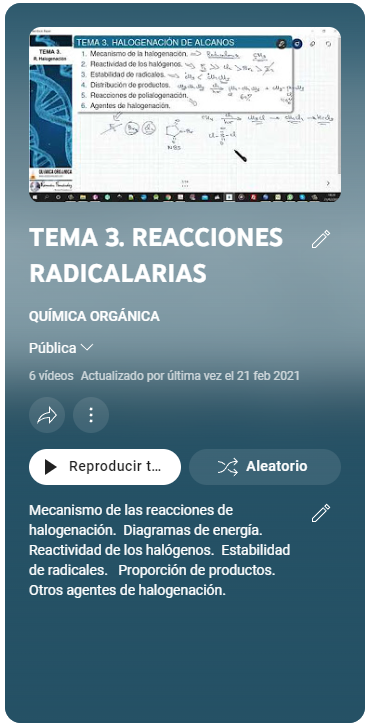 Alkanes react with halogens through radical mechanisms. Said reaction supposes the substitution of one or several hydrogens of the alkane by halogens.
Alkanes react with halogens through radical mechanisms. Said reaction supposes the substitution of one or several hydrogens of the alkane by halogens.
Mechanism of radical halogenation
The radical halogenation mechanism consists of three stages: initiation, propagation and termination. In initiation, the halogen molecule breaks homolytically, generating radicals. In the propagation stage, the substitution of hydrogens of the alkane by halogens occurs. When the reactants are exhausted, the radicals in the middle unite with each other, producing the termination stage.
Halogen reactivity
The first stage of propagation determines the rate of the reaction. For fluorine, this stage has a low activation energy, which makes fluorine the most reactive halogen. In the case of iodine, the activation energy is very high and the reaction does not take place. Order of reactivity in radical reactions: $F_2>Cl_2>Br_2>I_2$. In short, iodine is unreactive in radical halogenation and fluorine reacts violently.
Polyhalogenations
The halogenation reaction is difficult to stop, since the halogenated product is more reactive than the starting alkane. To avoid this problem, called polyhalogenations, excess alkane is used.
Radical stability
The mechanism of these reactions occurs with the formation of an intermediate called a radical whose stability depends on the number of substituents that surround the carbon that contains the lone electron. The radicals formed in the propagation step are stabilized by hyperconjugation. The order of stability of the radicals is given by: tertiary> secondary> primary.